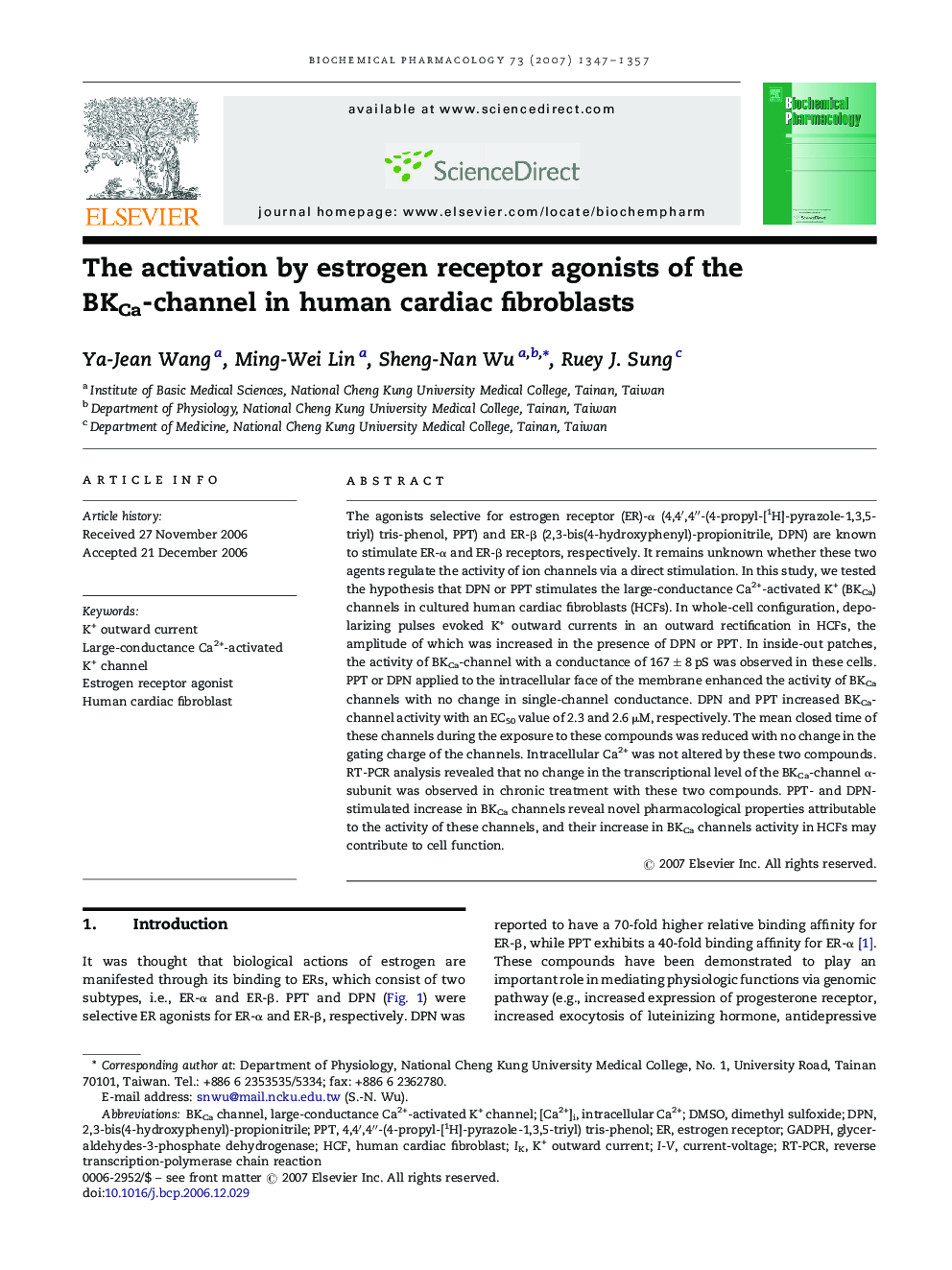| Article ID | Journal | Published Year | Pages | File Type |
|---|---|---|---|---|
| 2515712 | Biochemical Pharmacology | 2007 | 11 Pages |
The agonists selective for estrogen receptor (ER)-α (4,4′,4′′-(4-propyl-[1H]-pyrazole-1,3,5-triyl) tris-phenol, PPT) and ER-β (2,3-bis(4-hydroxyphenyl)-propionitrile, DPN) are known to stimulate ER-α and ER-β receptors, respectively. It remains unknown whether these two agents regulate the activity of ion channels via a direct stimulation. In this study, we tested the hypothesis that DPN or PPT stimulates the large-conductance Ca2+-activated K+ (BKCa) channels in cultured human cardiac fibroblasts (HCFs). In whole-cell configuration, depolarizing pulses evoked K+ outward currents in an outward rectification in HCFs, the amplitude of which was increased in the presence of DPN or PPT. In inside-out patches, the activity of BKCa-channel with a conductance of 167 ± 8 pS was observed in these cells. PPT or DPN applied to the intracellular face of the membrane enhanced the activity of BKCa channels with no change in single-channel conductance. DPN and PPT increased BKCa-channel activity with an EC50 value of 2.3 and 2.6 μM, respectively. The mean closed time of these channels during the exposure to these compounds was reduced with no change in the gating charge of the channels. Intracellular Ca2+ was not altered by these two compounds. RT-PCR analysis revealed that no change in the transcriptional level of the BKCa-channel α-subunit was observed in chronic treatment with these two compounds. PPT- and DPN-stimulated increase in BKCa channels reveal novel pharmacological properties attributable to the activity of these channels, and their increase in BKCa channels activity in HCFs may contribute to cell function.
